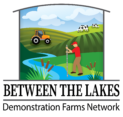Phosphorus Inputs: A Balancing Act
Phosphorus Inputs:
A Balancing Act
What is Phosphorus?
- Phosphorus is a nutrient that is naturally found at low levels in soil, water, plants and animals. (United States Geologic Survey)
- Phosphorus is commonly found unnaturally in fertilizers (used in agriculture and lawn care), cleaners (used in industry), and wastewater (from household and industrial waste). (US EPA – Nutrient Pollution)
Phosphorus is Important
- Phosphorus in low levels is necessary for life!
- Phosphorus is used to grow healthy crops. It helps provide a strong and resilient root system, which ultimately helps the plant grow. And phosphorus is important for photosynthesis, which is essential for proper plant growth and function. For these reasons, producers often add phosphorus to their fields to maintain productive crop yields. (Iowa State Extension and PennState Extension)
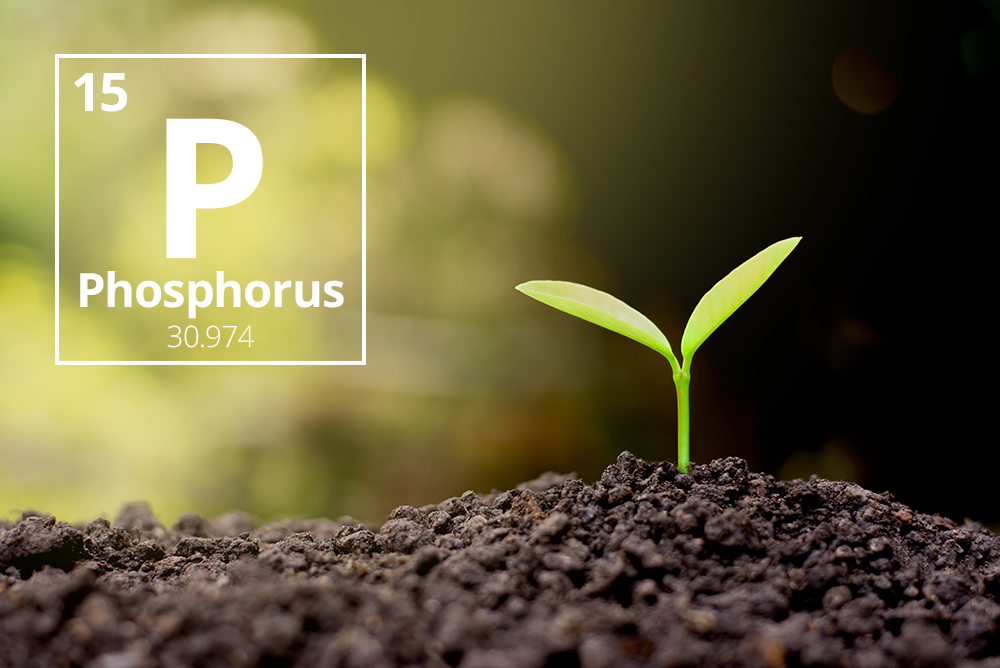
Phosphorus is a naturally-occurring nutrient necessary for life.
Image Credit: Taurus Agricultural Marketing Inc.
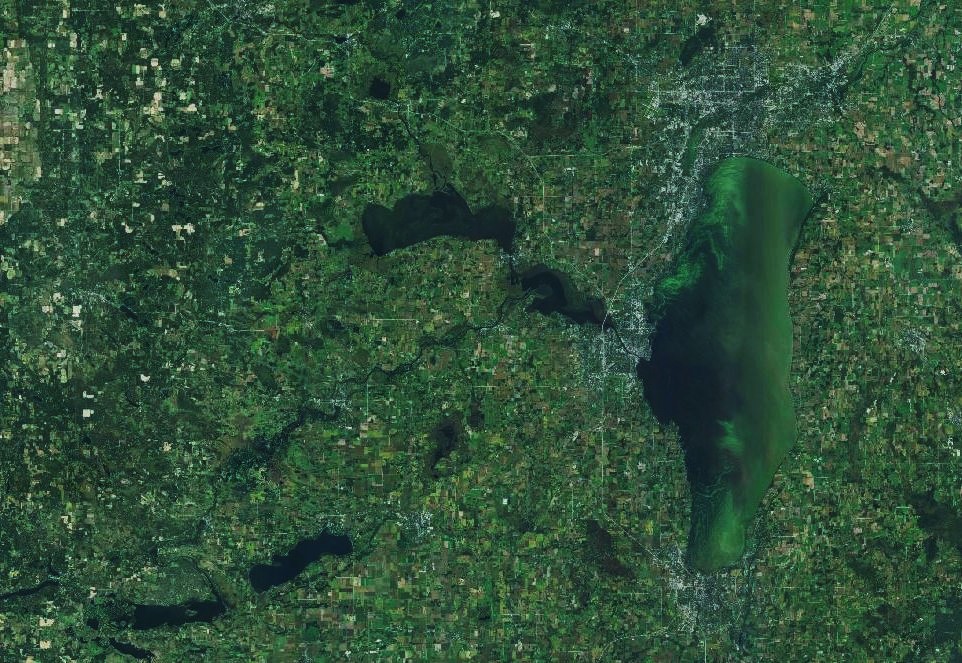
Lake Winnebago – The green color is due to large algae bloom occuring in the lake.
Image Credit: National Agriculture Imagery Program.
Too Much Phosphorus
- Because phosphorus helps plants grow on the land, it does the same for aquatic vegetation. High levels of phosphorus results in unhealthy levels of plant growth and specifically, harmful algal blooms. (US EPA – Phosphorus)
Total Phosphorus
- Total Phosphorus (TP) is a measure of the phosphorus in an environment. It includes all forms of phosphorus (reactive, condensed, and organic) in the environment. (US EPA – Water: Monitoring & Assessment)
- TP is the unit of measurement used in the Total Maximum Daily Load (TMDL) calculation. Managers use these numbers to assess how impaired a waterway is, and develop plans to reduce those numbers to meet water quality standards. (US EPA – Impaired Waters)

Lake Winnebago – The green color is due to large algae bloom occuring in the lake.
Image Credit: National Agriculture Imagery Program.
Harmful Algal Blooms
Phosphorus is natural part of aquatic ecosystems. It supports the growth of algae and aquatic plants, which provide food and habitat for fish, shellfish and smaller organisms that live in the water. But when too much phosphorus enters the environment it causes algae to grow faster than the ecosystem can handle and leads to harmful algal blooms. (National Oceanic and Atmospheric Administration – Harmful Algal Blooms)
Harmful algal blooms, or HABs, occur when colonies of algae grow out of control. These blooms often appear as a “green blanket” of algae that covers the water’s surface. They can produce harmful effects for the environment, human health, and our economies. (Wisconsin Department of Health Services – Harmful Algal Blooms Toolkit)
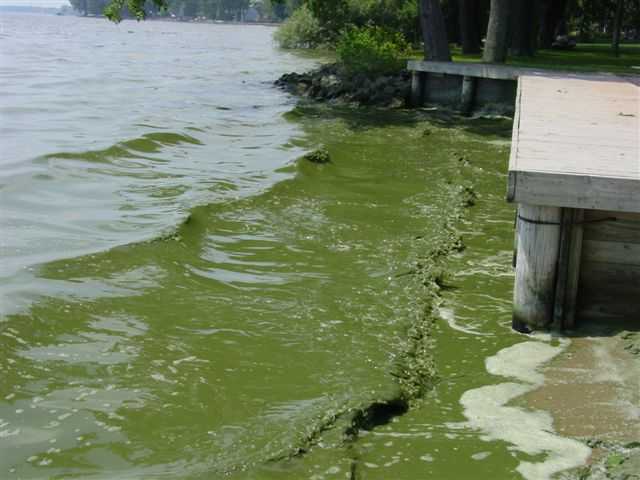
The “pea soup” color of this water indicates large amounts of algae in the water.
Image Credit: Winnebago County
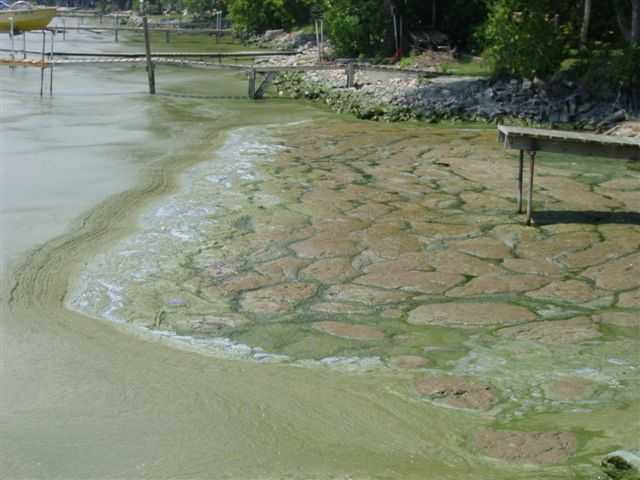
A thick algae mat floats on top of this lake’s surface during an algae bloom.
Image Credit: Winnebago County
Algal Bloom Impacts
Environment
Wildlife
- In freshwater, harmful algal blooms are most commonly caused by small organisms called phytoplankton, or more specifically, cyanobacteria. Some cyanobacteria produce toxins called cyanotoxins.
- Animals can be exposed to cyanotoxins from algal blooms through direct contact by swimming in or drinking contaminated water, or my consuming contaminated fish.
- Animals exposed to cyanotoxins may experience excessive salivation, vomiting, fatigue, staggered walking, difficulty breathing, convulsions, liver failure, or death.
- Fish may run out of oxygen and die due to excessive amounts of algae decomposing and using all the oxygen in the water.
- (Centers for Disease Control and Prevention)
Dead Zones
- Dead zones are areas of water bodies where aquatic life cannot survive because of low oxygen levels.
- They are caused when the overgrowth of algae consumes oxygen and blocks sunlight from underwater plants. Without sunlight, aquatic plants die, and cannot replenish oxygen. Eventually, the algae dies, and the remainder of oxygen in the water is consumed in the decomposition process.
- Most fish species are capable of seeking refuge outside the dead zone. However, leaving their natural habitat requires them to compete for food and shelter in another area of the river or lake. This can have negative impacts on the rest of the ecosystem.
- Stationary organisms (i.e., plants or benthic life forms) cannot seek oxygen elsewhere and therefore, low oxygen conditions may be fatal.
- (US EPA – Dead Zones)
Human Health
- People can be exposed to cyanotoxins during a harmful algal bloom by swimming in or drinking contaminated water, by breathing aerosolized toxins from the algae, and by eating contaminated fish.
- Touching or inhaling cyanotoxins can cause skin, eye, nose, throat, or respiratory tract irritation.
- Consuming cyanotoxin-contaminated fish or water can cause abdominal pain, headache, neurological symptoms, vomiting, diarrhea, and liver or kidney damage.
- (Wisconsin Department of Health Services – Health Concerns Related to Blue-Green Algae)
